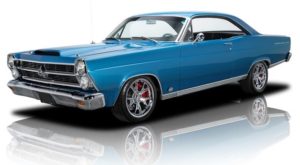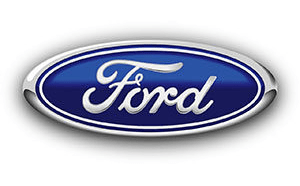TECH GUIDE: Choosing a Ford Flywheel – What You Need To Know
Car building has experienced a wide variety of engine combinations and changes in design in the past few decades.
The choices between big blocks, small blocks, Flathead, Cleveland, Windsor, Y blocks, FE, MEL,… it can be a little overwhelming sometimes, but typically we know what we like and will go with what we know..
Regardless of which you choose, it’s important to know your engine set up and how it works with the wide variety of transmissions available today.
One of the biggest challenges is knowing your engine balance, to ensure the correct flywheel is bolted on the first time.
You may be thinking that this seems like a “no-brainer”, but you are not alone if you just aren’t 100% sure of what you’re working with.




The following information will help you choose the correct flywheel.
Should you need information on something not found below, there will likely be a little more research to be done
Feel free to call us 208-453-9800
In addition, engine balance there are three other important factors to consider.
- Crank flange bolt pattern/sealing arrangement
- Ring gear tooth count.
- Engine balance
These are the critical elements to making sure you can properly attach your engine to your chosen transmission.

Each engine manufacturer has its own specific set-up.
So deciding which engine to use is the first step.
This is especially important because not everyone refers to things the same way.
Two engines might both be part of the “small block” family but are completely different when it comes to which flywheel they use.
You will want to gather as much possible information as you can before you set out on your parts-gathering journey so that you can find the right parts in one trip!
Identifying a 157 tooth Flywheel from a 164 Tooth Flywheel
- If your current flywheel is still in the car, remove the starter and look inside.
- If you see the ring gear & the teeth it is a 164 tooth FW.
- If all you see are the teeth then it is a 157 tooth FW.
Ford used three different balances, so you must be conscious of engine balance when choosing a flywheel.
Many aftermarket stroker kits will carry their own balance that is different from the original.
Ford Small Block Engines
- They have either 157 tooth or 164 tooth ring gear
- 221ci 1962–1963 28.2 oz-in
- 260ci 1962–1964 28.2 oz-in
- 289ci 1963–1968 28.2 oz-in
- 302ci 1968–1980 28.2 oz-in
- Boss 302ci 1969-1970 28.2 oz-in
- 302ci 1981–2001 50 oz-in
- 351W (Windsor)1969–1997 28.2 oz-in
- 351C (Cleveland)1970–1974 28 oz-in
- With a 6-bolt crank flange
Ford FE & Y Block Engines
- FE blocks were built from 1958-1976.
- Unique crank flange bolt pattern and balance.
- FE With 184 tooth ring gear.
- Y Block with 146 tooth ring gear.
Ford Big Block Engines
- Have displacements of 370, 429, & 460ci.
- Also referred to as the 385 series of engines sold between 1968–1997.
- With a 176-tooth ring gear.
- All are internally balanced with the exception of the 460 which was externally balanced at 24oz ( 1979-1999 )
Ford Modular & Coyote Engines
- Built from 1990-present.
- Check for 6 or 8 bolt crank flanges.
- 4.6L, 5.0L, 5.4L common displacements.
- There was one variation for the Mustang Shelby GT500 at 5.8L that will be different than the others.
- All are internally balanced.
- With 164 tooth ring gear.
Please log in to leave a comment.
No Comments Yet